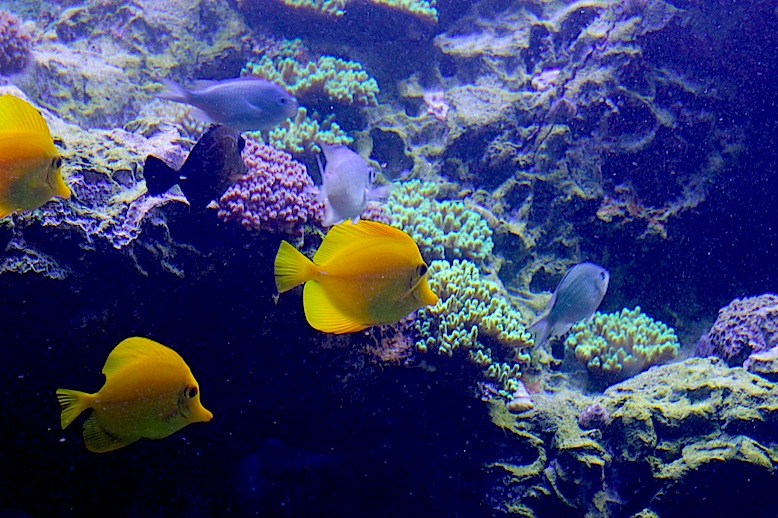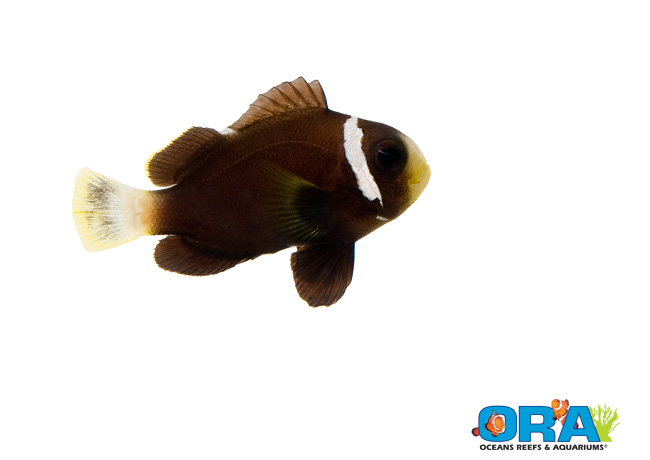
With all of the talk in Hawaii from the anti-aquarium activists, we’re constantly exploring new ways to make our hobby better and more responsible. Before I proceed, I should make it clear that this is not an admission on my part that the aquarium industry is doing anything wrong. Rather, it is merely an exploration into improving an industry that already promotes the aquaculture of its own products in any way possible. Admittedly, some of these improvements are in response to recent criticisms, while others are simply expanding on what is already taking place within the industry. Regardless, they are things I feel will move this hobby forward in a very sustainable way.
For the most part, aquarium breeders have been the aquarium industries shining light. Between the work of standout individuals and that of certain companies, they are all doing great work in promoting education within our hobby and taking great strides toward conquering the finicky nature and breeding habits of many different fish. This obviously relieves stress on wild populations of fish, but this progress, by and large, is completely ignored by the anti-aquarium folks. They continue to take the moral low ground, often ignoring the data that’s right in front of them and attacking a hobby that has probably the least impact in their state when compared to the far more destructive practices of sport fishing, tourism, diving activities, and so many more. To press onward, hobbyists need to not only continue being better fish breeders with the fish they have already had success, but also explore new and more difficult fish. Broadcast spawners like the yellow tang (Zebrasoma flavescens), who have long pre-settlement larval phases, obviously present some difficulties, but someday these fish will be able to be bred in captivity. Groundbreaking work is being done on a daily basis, and banning the industry outright severely undermines and stifles those efforts.
Unfortunately, aquarium breeding activities will not be the only saving grace for our hobby. As we mentioned, many species are very difficult to breed in captivity, which means wild-caught fish will continue to supply the aquarium industry. Because of this, we collectively need to figure out ways to reduce our dependence on wild stock. I’m a big proponent of setting up a white list for species that are not showing signs of declining in the wild or a n0-take list of species that historically don’t do well in captivity or have dwindling numbers on the reefs. Of course, any list created will have to be done so reasonably and without emotion. Anti-aquarium activists don’t feel like wild yellow tang populations are doing well. The yellow tang is their poster boy for declining fish numbers, so they have attached all manner of emotion to that particular species. Fortunately, the data doesn’t paint the same picture as the activists. According to Hawaii’s Division of Aquatic Resources (DAR), yellow tang populations have actually been on the rise thanks to no-take zones created around the islands, leading to the reasonable conclusion that the fishery is sustainable.
There are several species, however, that I personally feel should be left in the wild. I don’t suggest completely cutting them off to the hobby completely, as any future breeding attempts would require wild-caught individuals, but fish that simply don’t do well in captivity need to be imported in far fewer numbers. These could include the blue spot jawfish (Opistognathus rosenblatti), cleaner wrasses (Labroides sp.), and moorish idols (Zanclus canescens) to name a few, with the overall goal being limited availability to aquarium hobbyists. All of that being said, I will reinforce the ability of fish breeding activities with one of the biggest success stories in aquarium breeding. In 2010, the mandarin goby was successfully bred in captivity. For years they were regarded as one of the most notoriously difficult fish to keep alive in captivity. Despite this, hobbyists continued to purchase them most likely for their color and different mode of locomotion. Their popularity eventually led to a commercially available captive-bred mandarin gobies from a couple of different species. They were more expensive than their wild-caught counterparts, but they were completely bred and raised in a facility rather than being taken from the ocean. Of course, this no-take list starts with the aquarium hobbyist. If hobbyists stop buying these individuals, then they will likely not be imported as frequently. This will quiet some of the criticisms the hobby is receiving, but they will likely just take a different approach.
Expanding on the idea of a white list or a no-take list, the industry could impose quotas on certain species. This would ensure that no particular species would be over-harvested, and they could start out as being self-imposed regulations. These quotas would be enforced on the collector or possibly the wholesale level, and would probably be the most effective way to get the anti-aquarium nuts off our backs. That is, until other non-related anthropomorphic activities (e.g. tourism, diving, land development, etc.) around the ocean continue to drive down fish populations and the Snorkel Bob’s of the world need something else about the aquarium industry to gripe about. The obvious and immediate downside to quotas and other regulations would be an immediate price jump in the affected species. I would be willing to accept price jumps if necessary and reasonable, and this alone would potentially curtail some interest in the hobby by those who aren’t truly dedicated to it. Regardless of the route we take, if our hobby doesn’t start regulating itself, some legislative group might step in and try to do it for us.
Again, this article is not an admission of wrongdoing by the aquarium industry. The hobby is taking great steps to improve upon itself every single day and the arguments presented by folks that despise our industry is often skewed and full of inaccuracies. Despite that, we still need to be good stewards of the earth and do what we can to make as little negative impact as possible. Hopefully articles like this open up the dialogue among aquarium keepers and people within the industry. These suggestions may not be the best steps toward the most sustainable future, but we believe they are steps in the right direction.








Pingback: Aquarium Collectors Propose Catch Limits | AquaNerd()